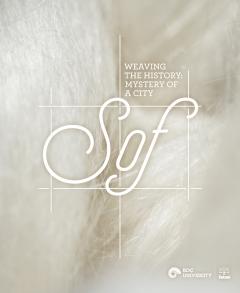
| Prepared for publication: | Filiz Yenişehirlioğlu |
| Translated by: | Turgut Berkes |
| Language: | English |
| Publication House: | Koç Üniversitesi VEKAM |
| Place of Publication: | Dumat Ofset |
| Categories: | Art History |
| Publication Year: | 2018 |
| Page: | 317 |
| Size: | 23 x 28 cm |
| ISBN: | 978-605-9388-13-9 |
| Price: |
Articles compiled in the first part of this book focus on subjects such as the roots of weaving in Anatolia, biological characteristics of the Angora goat, the Angora goat economy in the 19th century and the changes in the Angora goat density in Ankara, the adventure of the Angora goat in France and South Africa, the history of the Angora goat and mohair production in Ankara, mohair supply chain in the republican period, the use of the Angora goat as a symbol in the designs of banknotes, stamps and logos, the story of the 18th century painting the “View of Ankara” from Rijksmuseum collection which is the oldest painting known to depict Ankara and mohair weaving.
The exhibition catalog features objects and artefacts from Koç University Vehbi Koç Ankara Studies Research Center VEKAM’s library and archive, museum and personal collections. Among these, 16th and 17th century examples from mohair from the Topkapı Palace collection, 19th and 20th century clothing fashioned from mohair and sof from Sadberk Hanım Museum collection and sof fabric samples from Ethnographical Museum of Ankara collection and View of Ankara from Rijkmuseum portrays the importance of mohair and exemplifies its usages. A compilation of engravings, rare books, photographs about the Angora goat and mohair preparation tools and natural dyes used for dyeing mohair, in addition to contemporary woven and knitted mohair examples are also included in this catalog for readers to trace both the history and the processes included in mohair related production in Ankara and Anatolia.
Weaving the History: Mystery of a City, Sof exhibition explores the history of the Angora goat and its precious mohair and the premium, luxurious fabric called sof produced from the Angora goat’s brilliant unadulterated mohair yarn during the Ottoman Era. Sof production and mohair weaving once shaped the economy and social life of Ankara, especially in the 16th century ceased to an end in the 19th century and sof has become a forgotten value. This exhibition catalog documents the making of a research- based exhibition. Furthermore, it aims to become a reference book for researchers by compiling objects demonstrating the importance of the Angora goat and the usages of mohair together with presenting articles authored by researchers from various disciplines.
Articles compiled in the first part of this book focus on subjects such as the roots of weaving in Anatolia, biological characteristics of the Angora goat, the Angora goat economy in the 19th century and the changes in the Angora goat density in Ankara, the adventure of the Angora goat in France and South Africa, the history of the Angora goat and mohair production in Ankara, mohair supply chain in the republican period, the use of the Angora goat as a symbol in the designs of banknotes, stamps and logos, the story of the 18th century painting the “View of Ankara” from Rijksmuseum collection which is the oldest painting known to depict Ankara and mohair weaving.
The exhibition catalog features objects and artefacts from Koç University Vehbi Koç Ankara Studies Research Center VEKAM’s library and archive, museum and personal collections. Among these, 16th and 17th century examples from mohair from the Topkapı Palace collection, 19th and 20th century clothing fashioned from mohair and sof from Sadberk Hanım Museum collection and sof fabric samples from Ethnographical Museum of Ankara collection and View of Ankara from Rijkmuseum portrays the importance of mohair and exemplifies its usages. A compilation of engravings, rare books, photographs about the Angora goat and mohair preparation tools and natural dyes used for dyeing mohair, in addition to contemporary woven and knitted mohair examples are also included in this catalog for readers to trace both the history and the processes included in mohair related production in Ankara and Anatolia.
